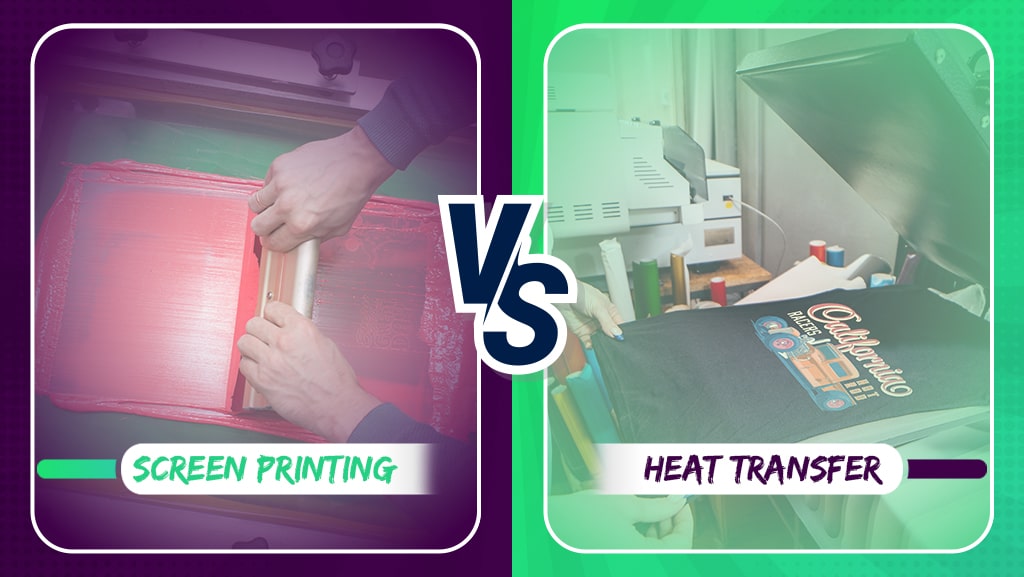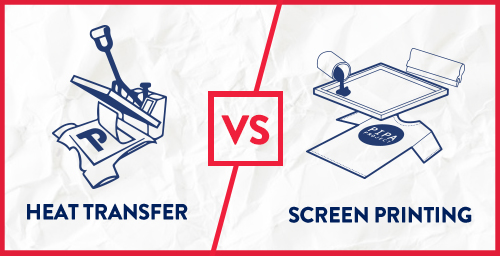The smart Trick of Tx Tees That Nobody is Talking About
The smart Trick of Tx Tees That Nobody is Talking About
Blog Article
Indicators on Tx Tees You Need To Know
Table of ContentsTx Tees Things To Know Before You BuyTx Tees Fundamentals ExplainedSome Ideas on Tx Tees You Need To KnowFascination About Tx TeesSome Known Questions About Tx Tees.Fascination About Tx TeesThe Ultimate Guide To Tx Tees
Include up various other costs, like the number of energies it takes to run the shop and the price of ink and solution per design. Take the print listed below.The emulsion should only be a few cents because you 'd just need to layer one display for this task. Normally, printers attempt to make up to 45% revenue on a print work.

With DTF, you can publish a handful of tee shirts, or simply one. Utilize the exact same calculator as the section over to determine just how much profit you would certainly make utilizing DTF transfers. Compare the costs and earnings to whichever approach speaks best to your arrangement and procedure. Both screen printing and DTF have their particular niches in the globe.
The 7-Minute Rule for Tx Tees
The most effective means to know? Ask around and see what printing shop like your own are doing. embroidery shop. Attempt both out and see which you like better
When you're selecting what kind of printing approach to use for printing your artwork styles on your garments, it is essential that you know the differences in between these 2 strategies so you can make the most of results while lessening prices. Display printing is one of the most commonly used method for printing styles on fabrics.
DTG printing is likewise recognized as place or straight to garment printing due to the fact that it publishes just what is required rather than making a display as display printers do. https://www.dreamstime.com/russellcostello79602_info. Display printing functions by screen filler squeegee display printing ink screen mesh display, then moving the picture to garment using warm and/or pressure
The DTG printer makes use of special dye-sublimation inks that are used into a pre-designed picture by a digital printing system. The inks come to be part of the textile, enabling vivid colors and exceptional information. It's also understood as spot or direct to garment printing due to the fact that it prints just what is needed rather of making a display as screen printers do.
The Ultimate Guide To Tx Tees
Initially, it's much faster - you can publish a fullcolor photo in minutes, instead of hours for display printing. Second, there's no established time or expenses included - you can print any type of layout you such as, without needing to create a screen first. Third, there's no waste - because screen printers screen print one design at a time, they have to screen each color separately.
The paper is very expensive and can only be used once. Once it's published on, it has to be discarded. - The initial acquisition rate is less than the ahead of time financial investment of DTG printers- You can publish multi-color layouts one display each time as opposed to having to print each shade independently like DTG printing.

Tx Tees - Truths
Instead of making use of display mesh as screen printers do, dye sublimation printers make use of laser technology to transfer your pictures onto garments or paper. A warmth procedure moves the dye from its solid-state straight right into the gas stage which subsequently fuses it onto fabric substratums when they are rapidly heated up to high temperature levels under high stress.
Sublimation printing is environment-friendly. It makes use of less water than screenprinting, and since it doesn't entail the usage of hazardous solvents, it's risk-free for all sorts of garments. The color sublimation inks are also odor free when treated, unlike display printers that utilize unsafe chemicals during the screen printing process that leave behind an unpleasant odor.
They also save money on costly devices like exposure systems considering that color sublimation printers don't need a UV exposure system or a flash remedy oven that is normally utilized in display printing (custom cap printing). What is direct to garment printing (DTG Printing)? DTG printing is a digital screenprinting process that prints straight onto textile making use of specialized inkjet printers
Fascination About Tx Tees
DTG printing uses numerous benefits over typical screenprinting, consisting of the capability to publish photo quality images, better color vibrancy, and the ability to publish designs on darker textiles. DTG printers work by heating the fabric ink until it becomes a gas. The gas then penetrates the fabric, bonding with the fibers to develop a long-term print.

Display printers just prepare their screen then start printing till they lack item or ink.- There is a vast array of seasoned display printers around the world, which can be valuable for novices. - It's a slower process - screen printers often need to await the ink to completely dry before they can print the following shade- Screen printers need manual labor, so there's a higher understanding contour and it takes longer to create a top notch style- Screen printing isn't as exact as DTG printing, so you might get some "bleeding" of shades from one part of the picture onto another otherwise done effectively.
Facts About Tx Tees Uncovered
Instead of making use of screen mesh as display printers do, dye sublimation printers utilize laser technology to transfer your photos onto garments or paper. A warm procedure transfers the dye from its solid-state straight into the gas stage which in turn integrates it onto fabric substrates when they are swiftly heated to heats under high pressure.
Sublimation printing is environment-friendly. It uses less water than screenprinting, and due to the fact that it doesn't include making use of hazardous solvents, it's secure for all kinds of clothing. The color sublimation inks are additionally odor-free when healed, unlike screen printers that make use of hazardous chemicals throughout the display printing process that leave behind an undesirable smell.
They additionally save cash on pricey equipment like exposure systems given that color sublimation printers don't require a UV exposure system or a flash treatment stove that is generally utilized in display printing. What is straight to garment printing (DTG Printing)? DTG printing is an electronic screenprinting procedure that prints directly onto fabric utilizing specialized inkjet printers.
All About Tx Tees
DTG printing supplies several advantages over standard screenprinting, consisting of the capability to print photographic quality photos, better shade vibrancy, and the capability to print designs on darker textiles. DTG printers function by heating up the textile ink until it becomes a gas. The gas then permeates the textile, bonding with the fibers to develop a long-term print.
Report this page